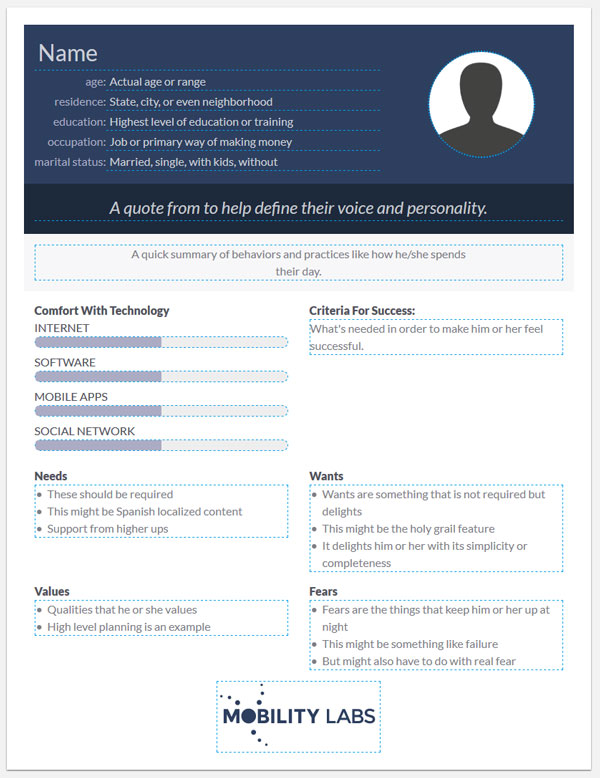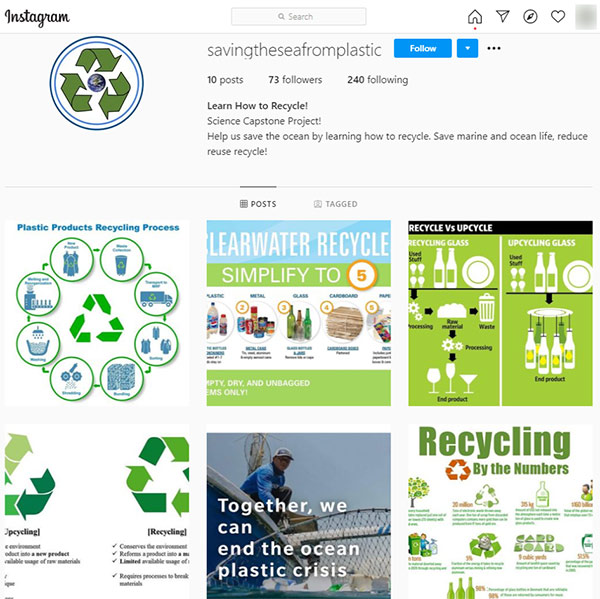Web content is a vehicle you use to communicate your brand to the rest of the world. But speaking to an anonymous throng can render your content marketing strategy tragically jammed.
If you’re clueless about who your ideal customer is, odds are your content can end up not being relevant.
Think of it as sending a train to a station that’s out of service — no one’s going to board that train!
In other words, without targeted content, people won’t engage with your brand. Let alone share your content, follow your calls to action, or feel inclined to buy from you.
That’s exactly what can happen if you don’t put your ideal customer in the foreground.
To avoid this from happening, you need to create your user persona template. And once you have the template, use it to craft unique SEO content.
Today we let you in on how to do just that.
What Is a User Persona Template?
A user persona template is the starting point for every online marketing campaign. Content marketers need to know who they’re dealing with so they can make their content effective.
A user persona is a profile of your ideal customer that you’ve created through in-depth research.
You can have more than one user persona. Templates like these are personal profiles you use to appeal to different sets of users.
Let’s say your company is selling custom rugs. Your marketing campaign can target different sets of user personas, such as:
- Young solo male professionals
- Young solo female professionals
- Young couples
- Larger families with kids, pets, etc.
Importantly, when developing different types of personas, you want to get much more granular. Include your audience’s goals, desires, and behaviors in your research.
“Buyer persona research gives you a realistic look at who makes up your target audience, what their challenges are, why they want your product or service, what they need from your business and brand, and more.”
Source: HubSpot
Remember, to create targeted content, you need to reevaluate your ideas from the vantage point of your ideal customer. So, the more you know about them, the better.
Below are points that may interest you about your ideal customers.
- Age and gender
- Behaviors and habits
- Pain points and wants
- Goals
How to Create a User Persona Template?
Designing a user persona template is all about research.
This can be a bumpy ride, but once your personas are up and running, you can plan for your business to pick up. Share them with your marketers and content creators and they’ll be working towards your company goals.
Below are sources you can tap into to gather information about your prospects:
- Interview existing customers about what they like about your product or service.
- Collect feedback on your leads from your sales team. Can they categorize typical customers into specific groups?
- Use website forms to extract persona information. If your website is used by several sub-groups such as professors, graduates, and undergraduates, include them in your forms.
Next, analyze the data you’ve gathered. Remember to extract basic demographic information and deeper motivations of your ideal customers.
“This is where you’ll distill the information you learned from asking “why” during those interviews. What keeps your persona up at night? Who do they want to be? Most importantly, tie that all together by telling people how your company can help them.”
Source: HubSpot
The trick is to learn how each persona relates to your products or services. And most importantly, how to position your solution in a way that resonates with your personas.
That’s when you can create content that’s relevant both to your ideal customers and to Google.
Bonus tip: Search for websites such as Behance and Persona Generator for ready-made user persona templates. You can use them to build your own personas by customizing them with the data from your research.
How to Leverage Your User Persona Templates to Craft Unique SEO Content?
In short, your user persona templates are the invaluable source you can draw on to:
- Find the right keywords.
- Craft the right content.
- Define your content promotion strategy.
Let’s see how these play out in real-life scenarios.
Do a Keyword Research With User Persona in Mind
You can leverage your user persona template in different stages of your keyword research.
This way, you end up with a set of target keywords that correlate with the actual needs and intentions of your users.
Perfect — just what you needed!
In the brainstorming stages when you’re assembling your seed keywords, ask yourself this question:
Do the keywords match the needs and intentions of user personas that visit my website?
To illustrate, let’s say you’re selling tankless water heaters — an energy-efficient water heating alternative to tank heaters.
- Beck the Stay-at-Home-Mom, would likely head over to Google and type in “what’s the advantage of tankless water heaters”. Or perhaps “tankless water heater vs tank”.
- Cost-Conscious Tim might look for cost-related information by typing in “tankless water heater installation cost”.
- Leon the Techie might target more specific terms, such as “condensing vs non-condensing tankless water heater” or “Rinnai tankless water heater”.
Other than that, check in with yourself when coming up with your final list of keywords.
Ask yourself: Do they still reflect my user persona templates?
Stay on Target With Your Content
Next, it’s good to have your user persona in mind further down the keyword implementation process — when you’re writing a piece of content.
Every keyword indicates an intent. Making sure you answer the user intent behind a keyword is the sole way to create unique SEO content.
The bottom line is — your content should position the solution so it resonates with your user personas.
Once you have the templates, you can target your content to each user persona.
To illustrate, let’s say you’re targeting busy eco-conscious young females. They want to minimize their impact on the environment but don’t have much time for research.
So, what do you do? You create bite-sized content pieces, informational graphics, and short Instagram posts on how to recycle waste the right way or where to find clothing donation boxes.

Nail It With Your Content Promotion Strategy
Hitting the target with your keywords and user intent means you did a great job with your content — but your job is not over yet.
You still need to promote the unique SEO content you’ve created.
To do this right, take each user persona and put it into the context of the world wide web. Where do they hang out? What social networks do they follow? What blogs do they frequent?
So, for example, if you’re targeting:
- Millennials — your best bet would be to publish on YouTube or Instagram.
- B2B businesses — LinkedIn is likely to be the place for you to promote.
Also, if you want to reach a particular group of people, you should write guest posts and publish them on websites that target similar audiences.
Remember our Cost-Conscious Tim? Let’s say we’re targeting this user persona for our guest post strategy. Finding money-saving blogs and guest posting on a money-saving topic related to your product would hit the right note.
Get the Unique SEO Content You’ve Always Wanted
If you feel your content marketing strategy is not working (except maybe gobbling up your resources), this could be because it’s lacking direction.
The success of your marketing campaign doesn’t depend on the vicissitudes of fortune. It depends on how targeted your content is.
To create unique SEO content that ranks well, engages, and converts, you need to know who you’re targeting.
The best way to do this is to create a specific user persona template. Or get vetted content creation professionals to do the job for you.
Get in touch with us today to get the unique SEO content you’ve always wanted for your business.
